Story Ideas
Story Ideas - 2016

Is Radon on your Radar?
Radon is the second leading cause of lung cancer after cigarette smoking. If you smoke and live in a home with high radon levels, you increase your risk of developing lung cancer. Having your home tested is the only effective way to determine whether you and your family are at risk of high radon exposure.
Radon is a gas that forms naturally when uranium, thorium, or radium, radioactive metals, breaks down in rocks, soil and groundwater. People can be exposed to radon primarily from breathing radon in air that comes through cracks and gaps in buildings and homes. Because radon comes naturally from the earth, people are always exposed to it.
The U.S. Environmental Protection Agency and the Surgeon General’s office estimate radon is responsible for more than 20,000 lung cancer deaths each year in the U.S. When you breathe in radon, radioactive particles from radon gas can get trapped in your lungs. Over time, these radioactive particles increase the risk of lung cancer. It may take years before health problems appear.
People who smoke and are exposed to radon are at a greater risk of developing lung cancer. EPA recommends taking action to reduce radon in homes that have a radon level at or above 4 picocuries per liter (pCi/L) of air (a “picocurie” is a common unit for measuring the amount of radioactivity).
Your chances of getting lung cancer from radon depend mostly on:
- How much radon is in your home—the location where you spend most of your time (e.g., the main living and sleeping areas)
- The amount of time you spend in your home
- Whether you are a smoker or have ever smoked
- Whether you burn wood, coal, or other substances that add particles to the indoor air.
More Information:
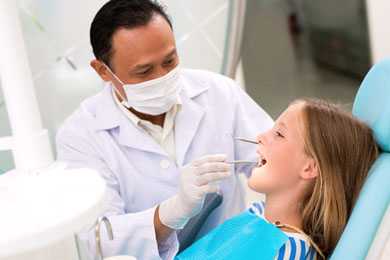
What Are School-based Dental Sealant Programs?
Tooth decay may result in pain and other problems that affect learning in school-age children. Sealants protect the chewing surfaces from decay by keeping germs and pieces of food out. School-based dental sealant delivery programs provide sealants to children unlikely to receive them otherwise. The programs—
- Define children in a school district who should receive sealants
- Confirm that there is a need for sealants
- Get financial, materials, and policy support
- Apply rules for selecting schools and students
- Arrange to apply sealants at school or offsite in clinics
School-based sealant programs are especially important to reach children from low-income families who are less likely to receive private dental care. Programs generally target schools by using the percentage of children eligible for federal free or reduced-cost lunch programs. Learn more by reading Oral Health and Learning, which includes more information about:
- Lost school time
- Oral health and learning
- Nutrition and learning
- Programs for improving oral health
Links

Trisomy Awareness
What is Down Syndrome?
Down syndrome is a condition in which a person has an extra chromosome. Chromosomes are small “packages” of genes in the body. They determine how a baby’s body forms during pregnancy and how the baby’s body functions as it grows in the womb and after birth. Typically, a baby is born with 23 pairs of chromosomes. Babies with Down syndrome have an extra copy of one of these chromosomes, chromosome 21. A medical term for having an extra copy of a chromosome is ‘trisomy’. Down syndrome is also referred to as Trisomy 21. This extra copy changes how the baby’s body and brain develop, which can cause both mental and physical challenges for the baby.
Even though people with Down syndrome might act and look similar, each person has different abilities. People with Down syndrome usually have an IQ (a measure of intelligence) in the mildly-to-moderately low range and are slower to speak than other children.
Common physical features of Down syndrome include:
- A flattened face, especially the bridge of the nose
- Almond-shaped eyes that slant up
- A short neck
- Small ears
- A tongue that tends to stick out of the mouth
- Tiny white spots on the iris (colored part) of the eye
- Small hands and feet
- A single line across the palm of the hand (palmar crease)
- Small pinky fingers that sometimes curve toward the thumb
- Poor muscle tone or loose joints
- Shorter in height as children and adults
Types of Down Syndrome
There are three types of Down syndrome. People often can’t tell the difference between each type without looking at the chromosomes because the physical features and behaviors are similar.
Trisomy 21: About 95% of people with Down syndrome have Trisomy 21.2 With this type of Down syndrome, each cell in the body has 3 separate copies of chromosome 21 instead of the usual 2 copies.
Translocation Down syndrome: This type accounts for a small percentage of people with Down syndrome (about 3%).2 This occurs when an extra part or a whole extra chromosome 21 is present, but it is attached or “trans-located” to a different chromosome rather than being a separate chromosome 21.
Mosaic Down syndrome: This type affects about 2% of the people with Down syndrome.2 Mosaic means mixture or combination. For children with mosaic Down syndrome, some of their cells have 3 copies of chromosome 21, but other cells have the typical two copies of chromosome 21. Children with mosaic Down syndrome may have the same features as other children with Down syndrome. However, they may have fewer features of the condition due to the presence of some (or many) cells with a typical number of chromosomes.

National Child Abuse Prevention Month
Child maltreatment is any act or series of acts, including child abuse or neglect, by a parent or other caregiver, for example, clergyperson, coach, teacher, that cause harm, potential for harm, or threat of harm to a child.
Child Abuse
Words or actions that cause harm, potential harm, or threat of harm
Words or acts of child abuse are deliberate and intentional; however, harm to a child might not be intended. Intention only applies to caregiver acts—not the results of those acts. For example, a caregiver may intend to hit a child as punishment (that is, hitting the child is not accidental or unintentional), but he or she did not intend to cause the child to have a concussion. Child abuse includes the following types of maltreatment::
- Physical abuse
- Sexual abuse
- Psychological abuse
Child Neglect
Failure to provide needs or to protect from harm or potential harm
Acts of child neglect are the failure to provide for a child’s basic physical, emotional, or educational needs or to protect a child from harm or potential harm. Like acts of child abuse, harm to a child may not be intended. Child neglect includes the following types of maltreatment:
- Physical neglect
- Emotional neglect
- Medical and dental neglect
- Educational neglect
- Inadequate supervision
- Exposure to violent environments
Preventing Child Abuse and Neglect
Child abuse and neglect are serious problems that can have lasting harmful effects on children. The goal is clear—to stop abuse and neglect from happening in the first place. Safe, stable, nurturing relationships and environments for all children and families can prevent child abuse and neglect.
Effective strategies for preventing child abuse and neglect focus on influencing individual behaviors, relationships among families and neighbors, community involvement, and the culture of a society. These might include campaigns to ensure attitudes supportive of parents and positive parenting or on modifying policies and societal norms to create safe, stable, nurturing relationships and environments. Effective strategies can help stop child abuse and neglect before they happen and foster commitment to social change.
Links:
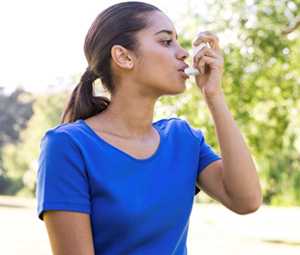
Asthma Awareness
Asthma is a disease that affects your lungs. An asthma attack happens in your body’s airways. During an asthma attack, the sides of the airways in your lungs swell and the airways shrink. Less air gets in and out of your lungs, and mucous clogs up the airways even more. An asthma attack may include coughing, chest tightness, wheezing, and trouble breathing.
Asthma’s Reach
Asthma affects 24 million people living in the United States, including more than 6 million children. It causes 3 in 5 people to limit their physical activity or miss days at school and work. Asthma is the leading cause of missed school days related to chronic illness. It causes more than 10 million missed school days a year. Asthma is also expensive, costing the nation $56 billion each year.
Cure?
There is no cure for asthma. But you can control it. Here are some tips that can help you control your asthma:
- Follow Your Doctor’s Advice
- With your healthcare provider’s help, make your own asthma action plan. Decide who should have a copy of your plan and where they should keep it.
- Use Inhalers and Take Your Medicine
- Asthma medicines come in two types: quick-relief and long-term control. Quick-relief medicines control the symptoms of an asthma attack. If you need to use your quick-relief medicines more and more, visit your doctor to see if you need a different medicine. Long-term control medicines taken daily help you have fewer and milder attacks, but they don’t help you while you are having an asthma attack.
- Avoid Triggers
- Your triggers can be very different from those of someone else with asthma. Know yours and learn how to avoid them. Watch out for an attack when you can’t avoid them. Some of the most common ones are tobacco smoke, dust mites, outdoor air pollution, cockroach allergen, pets, mold, and smoke from burning wood or grass.
In most cases, we don’t know what causes asthma, and we don’t know how to cure it. Certain factors may make it more likely for one person to have asthma than another. If someone in your family has asthma, you are more likely to have it. Regular physical exams that include checking your lung function and checking for allergies can help your healthcare provider make the right diagnosis.
The important thing to remember is that you can control your asthma.
Helpful Links

NIOSH publishes report on seat belt use among adult workers
Among all occupational groups, worker seat belt use are lower in states with secondary seat belt laws
CDC’s National Institute for Occupational Safety and Health (NIOSH) released a recent MMWR report that found occupational groups with the highest prevalence of not always using seat belts included workers in construction and extraction; farming, fishing, and forestry, maintenance, and repair. This is the first report to look at seat belt use among a broad range of occupational groups, aligning with CDC’s overall emphasis on road safety for the July Vital Signs report.
Roadway incidents involving motorized vehicles accounted for 24 percent of fatal occupational injuries in the United States during 2013 and were the leading cause of fatal injuries among workers. Seat belt use is a proven method to reduce injuries to motor vehicle occupants. Use of lap/shoulder seat belts reduces the risk of fatal injuries to front seat occupants of cars by 45 percent and the risk to light truck occupants by 60 percent. The report, “Seat Belt Use Among Adult Workers — 21 States, 2013” found that there were many variability by occupation in self-reported seat belt use.
For all occupations, the prevalence of not always using seat belts was higher in states with secondary seat belt laws (23.6 percent): where a driver can be ticketed for not using a seat belt only if stopped for another offense. However, states with primary seat belt laws, where drivers can be ticketed solely for not using a seat belt, saw a lower prevalence of workers who did not use a seat belt (10.4 percent).
States, employers, and workers share the responsibility for keeping workers safe on the road. To increase seat belt use:
- states can enact and enforce primary seat belt laws.
- employers can enforce safety policies requiring seat belt use by all vehicle occupants.
- seat belt safety advocates can target interventions to workers in occupational groups with lower reported seat belt use.
- workers can use seat belts on every trip, no matter how short and make sure passengers buckle up, too.
Download the publication here, and visit NIOSH’s motor vehicle safety webpages for resources on related topics such as distracted driving: http://www.cdc.gov/niosh/motorvehicle/.
To view CDC’s Vital Signs on Motor Vehicle Crash Injuries view: http://www.cdc.gov/vitalsigns/crash-injuries/
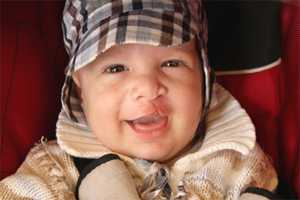
Understanding Cleft and Craniofacial Defects
July is Cleft and Craniofacial Awareness and Prevention Month. Craniofacial defects are conditions present at birth that affect the structure and function of a baby’s head and face. Two of the most common craniofacial defects are orofacial clefts, which occur when the lip and mouth do not form properly, and craniosynostosis, which happens when the bones in the baby’s skull fuse too early. Anotia and microtia are birth defects of the baby’s ear. Anotia occurs when the external portion of the ear is missing and Microtia is when the external portion of the ear does not form properly. Treatments and services for children with craniofacial defects can vary depending on the severity of the defect; the presence of associated syndromes or other birth defects, or both; as well as the child’s age and other medical or developmental needs. Children with certain craniofacial defects can have a greater risk for physical, learning, developmental, or social challenges, or a mix of these. Craniofacial defects have significant effects on families and the health care system:
- Each year, about 4,400 infants in the United States are born with a cleft lip with or without a cleft palate and about 2,700 infants are born with a cleft palate alone.
- About 4 infants per 10,000 live-births in the metropolitan Atlanta, Georgia, area are born with craniosynostosis.
- Recent studies have found that direct medical and health care use and average costs per child were a lot higher for children with orofacial clefts than for children of the same age without these conditions
CDC is working to learn more about craniofacial defects by monitoring and doing research to guide prevention efforts. CDC and its partners also work to better understand health care use and improve access to services and the quality of life of infants and children with these conditions.
Preventable Causes
Recently, CDC researchers and National Birth Defects Prevention Study (NBDPS) partners have reported important findings about some risk factors for craniofacial defects:
- Diabetes ― Women who have diabetes before they get pregnant have been shown to be more at risk of having a baby with anotia or microtia or a cleft lip with or without cleft palate.
- Smoking ― Women who smoke anytime during the month before they get pregnant through the end of the third month of pregnancy have been shown to be more likely to have a baby with a cleft lip with or without cleft palate.
- Maternal thyroid disease ― Women with thyroid disease or who are treated for thyroid disease while they are pregnant have been shown to be at higher risk of having an infant with craniosynostosis.
- Certain medications ― Women who report using clomiphene citrate (a fertility medication) just before or early in pregnancy have been shown to be more likely to have a baby with craniosynostosis.
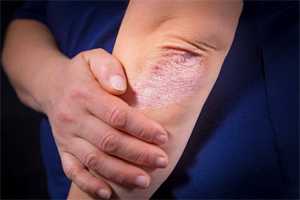
What Is Psoriasis?
Psoriasis is a chronic autoimmune skin disease that speeds up the growth cycle of skin cells. It appears when the body’s own immune system becomes overactive and attacks normal tissues in the body.
Psoriasis causes patches of thick red skin and silvery scales. Patches are typically found on the elbows, knees, scalp, lower back, face, palms, and soles of feet, but can affect other places (fingernails, toenails, and mouth). The most common type of psoriasis is plaque psoriasis.
Psoriasis is not contagious. You can’t get psoriasis from touching someone who has it.
Many cases of psoriasis have a typical appearance, but it can be confused with other skin diseases (like eczema), so a dermatologist (skin doctor) is often the best doctor to diagnose it. Treatment usually depends on how much skin is affected, how bad the disease is (many or severe skin patches), or the location (especially the face). Treatments range from creams and ointments applied to the affected areas to ultraviolet light therapy to drugs, including methotrexate.
Efforts to address psoriasis are focused on studying and treating individual patients and on clinical and biomedical research.

August Is National Immunization Awareness Month
National Immunization Awareness Month (NIAM) is held each August to encourage people of all ages to make sure they are up to date on the vaccines recommended for them. Communities use the month to raise awareness about the important role vaccines play in preventing serious, sometimes deadly, diseases.
The National Public Information Coalition (NPHIC), in collaboration with CDC’s National Center for Immunization and Respiratory Diseases, developed communication toolkits to help public health professionals communicate about vaccines with various audiences. Each week of #NIAM16 focuses on a different stage of the lifespan:
- Adults (Aug. 1-7)
- Pregnant women (Aug. 8-14)
- Babies and young children (Aug. 15-21)
- Preteens and teens (Aug. 22-28)
There is also a toolkit focusing on school-aged children to help remind parents to get their children vaccinated before the school year starts.
The toolkits include sample key messages, media materials, social media messages, FAQs, and web links and resources. You can also get eye-catching NIAM logos and banners to highlight your participation in NIAM on your social media profiles. A media outreach toolkit is one of the new resources available this year to help reach media on immunization-related topics. Download the toolkits at NPHIC’s NIAM website.

Suicide Prevention
Suicide is a serious public health problem that can have lasting harmful effects on individuals, families, and communities. While its causes are complex and determined by multiple factors, the goal of suicide prevention is simple: Reduce factors that increase risk (i.e. risk factors) and increase factors that promote resilience (i.e. protective factors). Ideally, prevention addresses all levels of influence: individual, relationship, community, and societal. Effective prevention strategies are needed to promote awareness of suicide and encourage a commitment to social change.
Facts to consider
- In 2014, Males take their own lives at nearly four times the rate of females and represent 70.8% of all suicides.
- Suicide is tenth leading cause of death overall in the U.S. It is the second leading cause of death among persons aged 10-34 years, the fourth among persons aged 35-54 years, the eighth among person 55-64 years, and the seventeenth among persons 65 years and older.
- Suicide results in an estimated $51 billion in combined medical and work loss costs.

October is SIDS (Sudden Infant Death Syndrome) Awareness Month. Learn more about SIDS and how to reduce risk.
About SUID and SIDS
About 3,500 US infants died suddenly and unexpectedly in 2014 in the United States. These deaths are called sudden unexpected infant deaths (SUID). Sudden Infant Death Syndrome (SIDS) – the sudden death of an infant less than 1 year old, which cannot be explained after a thorough investigation – is one type of SUID and the leading cause of death for infants younger than 1 year.
Doctors and researchers don’t know the exact causes of SIDS. However, research shows that parents and caregivers can take actions to help reduce the risk of SIDS and other sleep-related causes of infant death:
- Always place babies on their backs when putting them to sleep for naps and at night.
- Use a firm sleep surface, such as a mattress in a safety-approved crib, covered by a fitted sheet.
- Share your room with your baby, not your bed. Your baby should not sleep in an adult bed, on a couch, or on a chair alone, with you, or with anyone else.
- Keep soft objects, such as pillows and loose bedding, out of your baby’s sleep area.
- Do not smoke during pregnancy or around the baby because these are strong risk factors for SIDS. The risk of SIDS is even greater when a baby shares a bed with a smoker. To reduce risk, do not smoke during pregnancy, and do not smoke or allow smoking around your baby. For help in quitting, call 1-800-QUIT-NOW (1-800-784-8669) or visit smokefreewomen.
Types of SUID
-
Sudden Infant Death Syndrome (SIDS)
SIDS is defined as the sudden death of an infant less than 1 year of age that cannot be explained after a thorough investigation is conducted, including a complete autopsy, examination of the death scene, and a review of the clinical history. About 1,500 infants died of SIDS in 2014. SIDS is the leading cause of death in infants 1 to 12 months old. -
Unknown Cause
The sudden death of an infant less than 1 year old that remains undetermined because one or more parts of the investigation was not completed. -
Accidental Suffocation and Strangulation in Bed
The sudden death of an infant less than 1 year of age that can happen because of:- Suffocation by soft bedding—for example, when a pillow or waterbed mattress covers an infant’s nose and mouth.
- Overlay—when another person rolls on top of or against the infant while sleeping.
- Wedging or entrapment—for example, when an infant is wedged between two objects such as a mattress and wall, bed frame, or furniture.
- Strangulation—for example, when an infant’s head and neck become caught between crib railings.
Related Links
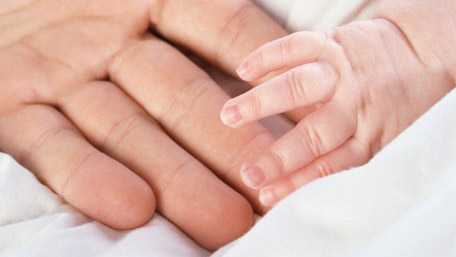
November Is National Prematurity Awareness Month. Learn about the problem, risk factors, and what we can do to reduce premature birth.
About Premature Birth
Important growth and development occur throughout pregnancy—especially in the final months and weeks. Premature (also known as preterm) birth refers to when a baby is born too early, before 37 weeks of pregnancy. Premature birth is a concern because babies born too soon miss out on this valuable time to grow and develop.
In 2014, about 1 in 10 babies were born before 37 weeks of pregnancy were completed. Preterm birth is a leading cause of infant mortality. Babies who survive can have short- and long-term health problems.
Preterm birth rates have been declining since 2007 and a new CDC analysis published this month shows that this decline is due, in part, to declines in the number of births to teens and young mothers. Despite this success, about 1 out of 10 babies (9.6%) was born too soon in the United States in 2014. Additionally, racial and ethnic differences in preterm birth rates remain. In 2014, the rate of preterm birth among non-Hispanic black women (13.2%) was about 50% higher than the rate of preterm birth among non-Hispanic white women (8.9%).
Risk Factors
Even if a woman does everything “right” during pregnancy, she still can have a premature baby. In addition to race/ethnicity, some of the risk factors that can increase the chance that a woman will have a premature baby are –
- Very young or old age of the mother
- Previous preterm birth
- Being pregnant with more than one baby (twins, triplets, or more)
- Chronic health problems in the mother, such as high blood pressure, diabetes, and clotting disorders
- Certain infections during pregnancy
- Use of tobacco, alcohol, or illegal drugs during pregnancy
Preventing Preterm Birth
Reducing preterm birth is a national public health priority. CDC has identified five key strategies proven to reduce the occurrence of preterm birth –
- Providing women age 18–44 access to health care before and between pregnancies;
- Identifying women at risk for giving birth too early and offering effective treatments to prevent preterm birth;
- Discouraging deliveries before 39 weeks without a medical need;
- Preventing unintended pregnancies and achieving ideal length of time between pregnancies; and
- When undergoing in vitro fertilization, electing single embryo transfer as appropriate to reduce multiple births.
Related Links:
National Prematurity Awareness Month
MMWR: Effects of Maternal Age and Age-Specific Preterm Birth Rates on Overall Preterm Birth Rates — United States, 2007 and 2014

Winter Safety
When winter temperatures drop well below normal, staying warm and safe can become a challenge. Whether there’s a winter storm on its way or it’s just plain cold outside, it’s important to prepare ahead to make sure you and your family stay safe.
Winter Storms
Winter storms often bring along extremely cold temperatures. These storms can also cause power failures, loss of communication services, and icy roads.
Although staying indoors as much as possible can help reduce the risk of car crashes and falls on the ice, you might also face hazards inside your home. For one, power failures or poor heating systems can make your home dangerously cold. On the other hand, using space heaters and fireplaces to stay warm can increase your risk of household fires or carbon monoxide poisoning. To reduce these risks, make sure to take extra steps to prepare your home and car before winter arrives, including checking your heating systems and installing carbon monoxide and smoke detectors.
Plan Ahead
Exposure to cold temperatures, whether indoors or outdoors, can cause other serious or life-threatening health problems. While infants and older adults are particularly at risk, anyone can be affected. To keep you and your family safe, you should know how to prevent cold-related health problems, like hypothermia or frostbite, and what to do if a cold-weather health emergency arises. Always wear warm, well-insulated clothing when going outside, and be sure to take extra precautions if you must travel.
Learn More
- Page last reviewed: December 20, 2016
- Page last updated: December 20, 2016
- Content source:



 ShareCompartir
ShareCompartir